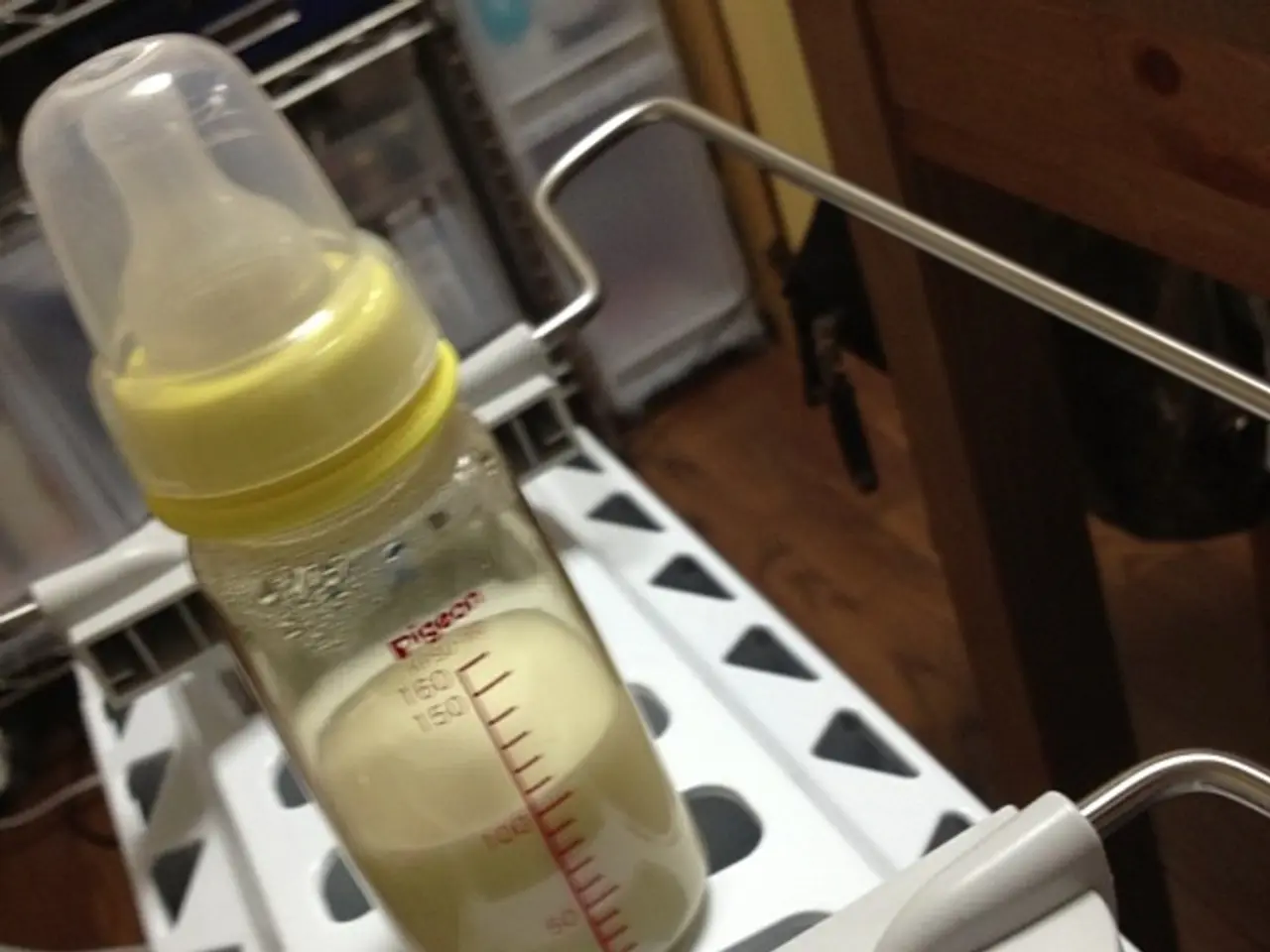Duration of Usable Fairlife Milk Post-Opening: A Comprehensive Guide
Fairlife milk, known for its extended shelf life and unique filtration process, can stay fresh for up to 10 days after opening when stored and handled properly.
According to customer experiences, the freshness of Fairlife milk depends mostly on storage conditions and hygiene practices. Proper refrigeration, prompt resealing, and avoiding temperature fluctuations and contamination are key factors in maintaining its quality.
Refrigeration
To slow bacterial growth, it's essential to keep the milk consistently cold, below 40°F or 4°C. Storing the milk in the main body of the fridge, rather than the door, helps maintain a stable temperature.
Sealing
Properly resealing the container limits exposure to air and contaminants. Each time Fairlife milk is opened, it is exposed to air, which can introduce bacteria and potentially accelerate spoilage.
Handling
Avoid introducing bacteria by not drinking directly from the container and using clean utensils when pouring.
Storage Location
Storing Fairlife milk in the coldest part of the refrigerator can help extend its freshness.
As a general guideline, Fairlife milk should be consumed within 7 to 10 days after opening, provided it has been consistently refrigerated at the correct temperature.
It's important to note that the "best by" date on Fairlife milk is a quality indicator, not an expiration date. The type of Fairlife milk (whole, 2%, skim) does not significantly affect its freshness after opening, provided proper refrigeration is maintained.
Fairlife milk undergoes ultra-pasteurization, a heat treatment that kills more bacteria while preserving flavor and nutritional value. This process, combined with ultrafiltration, which separates the milk into its components and recombines them in specific proportions, helps extend its shelf life.
Freezing Fairlife milk can extend its shelf life but may cause texture changes upon thawing. It's best to freeze Fairlife milk in smaller portions and thaw it in the refrigerator overnight.
The packaging of Fairlife milk is designed to protect it from light and air, both of which can accelerate spoilage.
Consuming spoiled Fairlife milk can lead to symptoms such as stomach cramps, nausea, vomiting, and diarrhea. The severity of these symptoms can vary depending on the amount of spoiled milk consumed and the individual's immune system.
In most cases, the symptoms of food poisoning from spoiled milk will resolve on their own within 24 to 48 hours. However, if severe symptoms like high fever, bloody stool, or persistent vomiting occur, seek medical attention.
After the opening, the freshness guidelines overrule the "best by" date; always check for signs of spoilage before consuming. Signs of spoiled Fairlife milk include a sour or off-putting odor, changes in texture and appearance, and a sour or acidic taste.
In summary, while Fairlife milk can stay fresh for up to 10 days after opening with proper refrigeration and handling, its freshness depends mostly on storage conditions and hygiene practices. By following these guidelines, you can enjoy the benefits of Fairlife milk while ensuring its quality and safety.
Maintaining the health-and-wellness aspect of choosing Fairlife milk: Proper refrigeration, prompt resealing, and handling with hygiene practices can help increase the shelf life and quality of Fairlife milk, ensuring it remains a great choice for your daily diet (food-and-drink). As a lifestyle decision, adhering to storage recommendations can prevent potential food poisoning and related health issues (health-and-wellness).




